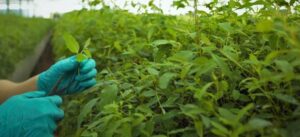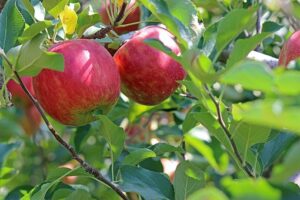Protected Cultivation in India : As a result of protected cultivation, farming became easier and more controllable. This farming method allows farmers to easily control the climate conditions of crop production, resulting in a high yield. Climate conditions are currently unfavourable, which adversely affects farming and production. In addition to climate, many other factors have a negative impact on farming production. This problem is solved by the protected cultivation method, in which the environment and other farming aspects can be manually controlled.
Would you like to know more about protected cultivation?
You’ve come to the right place because this blog only discusses protected horticulture, giving you the opportunity to learn more about it. Let’s get the blog rolling right away and keep it going.
What is Protected Cultivation?

Protected farming is the practise of growing crops in an enclosed space. This agricultural technique controls temperature, humidity, light, and other factors based on the crop’s requirements for growth. Various farming circumstances can be simply managed in accordance with needs. It is healthy and offers high productivity without diverse circumstances. the process of fully, partially, or in certain situations, modifiedly reducing a crop’s exposure to unfavourable weather conditions. It is possible to practise protected agriculture in a variety of ways, including using plastic tunnels, mulch, raised beds, insect-proof net homes, insect-proof net houses, greenhouses, polyhouses, and trellises.
They provide two types of protected cultivation: a separate process and a combined process. They both ensure that the plants receive favourable environmental conditions and are protected from harsh climates, thereby extending the period during which they can be cultivated or off-season crops can be grown.
Read More:The different types of agricultural robots and their importance
Protected cultivation is important
India’s economy has been based on agriculture for ages. As well as providing jobs to 90% of the population, agriculture also contributes to the economy. Besides providing food security, India exports high-quality fruits and vegetables. It is self-sufficient in agriculture. While India has been striving to produce quality agricultural products for the past ten years, the demand has not been met. For Indian agriculture to improve its productivity, profitability, and respectability, new and effective production technologies are needed.
A popular practice in the developed world, including India, is protected cultivation. As a result of the new farming method, cropping patterns and climatic conditions can be adjusted according to the conditions. It is well known that India suffers from climatic extremes such as floods, droughts, and other climatic abnormalities that cause crop losses regularly or damage resulting in economic losses. Hence, the protected cultivation method was developed to avoid all these harmful conditions. This provides better opportunities for Indian farmers. Indian agriculture can succeed by adopting protected cultivation technology. Farmers can easily meet the high market demands using this method.
In the greenhouse, non-native and off-season vegetables and flowers are grown commercially, and quality seedlings are grown in protected conditions. High-value agriculture products have substantially increased in economic value thanks to greenhouse farming. In high rainfall regions, like the North-Eastern states and coastal regions, greenhouses are used as rain shelters. A protected cultivation uses fewer pesticides and insecticides, reducing residues on crops.
Objectives of Protected Cultivation

India now practices protected cultivation widely because it has many advantages. Below you will find the objectives of protected cultivation.
-
Plants are protected from abiotic stress by the farming method, including temperature, excess and deficit water, hot waves, and biotic stress from pests and diseases. Plants can easily adapt to the natural and climate conditions in India due to protected cultivation.
-
This method maximizes water efficiency while minimizing weed infestation. Water is saved during the cultivation of the plant by using this method.
-
Plants grown under protected conditions produce more per unit area. Increasing production and income is the main reason.
-
Crop quality is maintained by using this method, which minimizes pesticide use.
-
Horticulture crops are valued and of high quality because of the method.
-
A protected farm propagates healthy, uniform, and disease-free planting material, improving germination percentages and improving hardening.
-
As a result of this farming method, the transplants are genetically improved and disease-free.
Read More: Techniques and solutions for smart farming in India
Protected Cultivation Structures
There are three main components of protected cultivation structures: the frame, the cladding material, and the ventilation/climate control system. Crops are protected by the frame of the structure from a variety of damaging factors such as wind, rain, snow, soil, climate moisture, physical, and chemical degradation. Cladding materials designed to capture sufficient heat during cold weather and provide photosynthetically active radiation (PAR). A plant’s productivity can be enhanced with optimal weather conditions provided by ventilation or climate control.
A structure that determines the dimensions, ventilation requirements, and stability against adverse conditions such as wind, snow, heavy rains, hailstorms, etc. of a protected cultivation. Various sources of design load are determined, including dead load, which fixes service equipment such as heating, ventilation, air circulation, electrical, lighting, and watering. Repair crews, hanging plants, etc., are part of the live load. Wind load and snow load are two others.
Protection of Cultivation Strategies
Protected cultivation is the only solution to every major farming issue. This method enables farmers to address all climatic uncertainties, climate change, inappropriate use and low productivity of natural resources, nutritional security in topographic and climatic regions, bad areas, pesticide-polluted environments, etc. Generally speaking, the farming method refers to artificially increasing the production level of plants by providing favourable conditions for their growth. By covering the plant, the climate conditions are controlled so the plant cannot withstand higher or lower temperatures, humidity, and other adverse factors. Make sure you have enough light for photosynthesis, optimal fertilization, and adequate watering.
Status of Protected Cultivation in India
Despite being a new technique in India, protected cultivation has become popular due to its simplicity. A high-tech protected farming system for vegetables and high-value horticulture crops was developed in 1998 by the Indian Agricultural Research Institute (IARI) in New Delhi. These techniques have led to the refinement and upscale of farming in the past ten years, reducing costs and suiting local conditions. Almost all farmers today practice this farming practice and do it over a large area. Indian agriculture has benefited from protected cultivation over time.
Area Under Protected Cultivation in India
This new method has been greatly accepted by India in the last decade, and it is now used by almost every state in the country. Approximately 110 ha of land in India and over 275,000 hectares worldwide were under protected cultivation by the end of the 20th century, according to the report. This area has grown by 10% over time. During 2007-2012, Gujarat, Andhra Pradesh, West Bengal, Tamil Nadu, Punjab, Haryana, and Maharashtra continuously expanded the area under protected farming. Till 2012, protected cultivation covered 5,730.23 hectares in Maharashtra and 4,720.72 hectares in Gujarat.
Total Area of Protected Cultivation Worldwide
| Country | Protected Cultivation Area (ha) |
| China | 27,60,000 |
| Korea | 57,444 |
| Spain | 52,170 |
| Japan | 49,049 |
| Turkey | 33,515 |
| Italy | 26,500 |
| Mexico | 11,759 |
| Netherlands | 10,370 |
| France | 9,620 |
| United States | 8,425 |
Plants Cultivated Under Protected Conditions

Growing vegetables and flowers under protected cultivation involves relatively high input costs and good management practices, which directly affect the economic viability of the production system. Protective structures are most effective when they are planned, managed, and paid attention to properly.
Capsicums, melons, tomatoes, roses, carnations, chrysanthemums, and gerberas are among the horticulture crops that are protected from damage. The nursery business is becoming a very popular enterprise in protected farming as well as a source of income and employment.
The following table shows the major flower, vegetable, fruit, seedling and nursery plants that are grown under protected cultivation:
| Flowers | Vegetables | Fruits | Seedling and |
| Nurseries | |||
| Chrysanthemum | Tomato | Strawberry | Vegetables |
| Carnation, | Coloured Capsicum | Flowers | |
| Gerbera, | Cucumber | Tissue Culture | |
| Rose, | Broccoli | Clonal for | |
| Forestry | |||
| Orchid, | Red | Fruit Grafting | |
| Cabbage | |||
| Lilium, | Leafy vegetables | ||
| Gladiolus | Radish |
Read More:The Beginner’s Guide to Aloe Vera Farming, Aloe Vera Cultivation
Benefits of Protected Cultivation
In the section below, we define the benefits of protected cultivation:
- This method technique, environmental control, allows the plants to grow any time of the year. That means crops grow under hot climatic conditions when it will not be possible to grow crops under open field conditions.
- It provides production or yield based on the maximum level per unit area, per unit input, and per unit volume.
- This method’s microcosm technique allows the high-quality yield, which is free from pathogens, chemical residue, and insect attack.
- This method also generates self-employment for the educated rural farmers in the farming sector.
These are some major factors about protected cultivations which help to raise your knowledge about protected cultivations. For more such topics, logging Aarug agro and stay with the blog section of Aarug agro.


